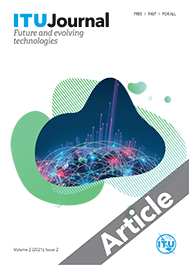|
Ensuring reliable connectivity to cellular-connected UAVs with up-tilted antennas and interference coordination
|
Authors: Md Moin Uddin Chowdhury, Ismail Guvenc, Walid Saad, Arupjyoti Bhuyan
Status: Final
Date of publication: 6 December 2021
Published in: ITU Journal on Future and Evolving Technologies, Volume 2 (2021), Issue 2, Pages 165-185
Article DOI : https://doi.org/10.52953/LEFT7402
|
 | Abstract:
To integrate unmanned aerial vehicles (UAVs) in future large-scale deployments, a new wireless communication paradigm, namely, the cellular-connected UAV has recently attracted interest. However, the line-of-sight dominant air-to-ground channels along with the antenna pattern of the cellular ground base stations (GBSs) introduce critical interference issues in cellular-connected UAV communications. In particular, the complex antenna pattern and the ground reflection (GR) from the down-tilted antennas create both coverage holes and patchy coverage for the UAVs in the sky, which leads to unreliable connectivity from the underlying cellular network. To overcome these challenges, in this paper, we propose a new cellular architecture that employs an extra set of co-channel antennas oriented towards the sky to support UAVs on top of the existing down-tilted antennas for ground user equipment (GUE). To model the GR stemming from the down-tilted antennas, we propose a path-loss model, which takes both antenna radiation pattern and configuration into account. Next, we formulate an optimization problem to maximize the minimum signal-to-interference ratio (SIR) of the UAVs by tuning the up-tilt (UT) angles of the up-tilted antennas. Since this is an NP-hard problem, we propose a genetic algorithm (GA) based heuristic method to optimize the UT angles of these antennas. After obtaining the optimal UT angles, we integrate the 3GPP Release-10 specified enhanced inter-cell interference coordination (eICIC) to reduce the interference stemming from the down-tilted antennas. Our simulation results based on the hexagonal cell layout show that the proposed interference mitigation method can ensure higher minimum SIRs for the UAVs over baseline methods while creating minimal impact on the SIR of GUEs. |
|
Keywords: 3GPP, advanced aerial mobility (AAM), antenna radiation, drone corridor, enhanced inter-cell interference coordination, genetic algorithm, ground reflection, hexagonal cell layout, interference, unmanned aerial vehicle (UAV), unmanned aircraft system (UAS), UAS traffic management (UTM), urban air mobility (UAM)
Rights: © International Telecommunication Union, available under the CC BY-NC-ND 3.0 IGO license.
|
|
| ITEM DETAIL | ARTICLE | PRICE | |
|---|
ENGLISH  Full article (PDF)
Full article (PDF) |
|
| 0
| Free of charge | DOWNLOAD |
|
|
| |